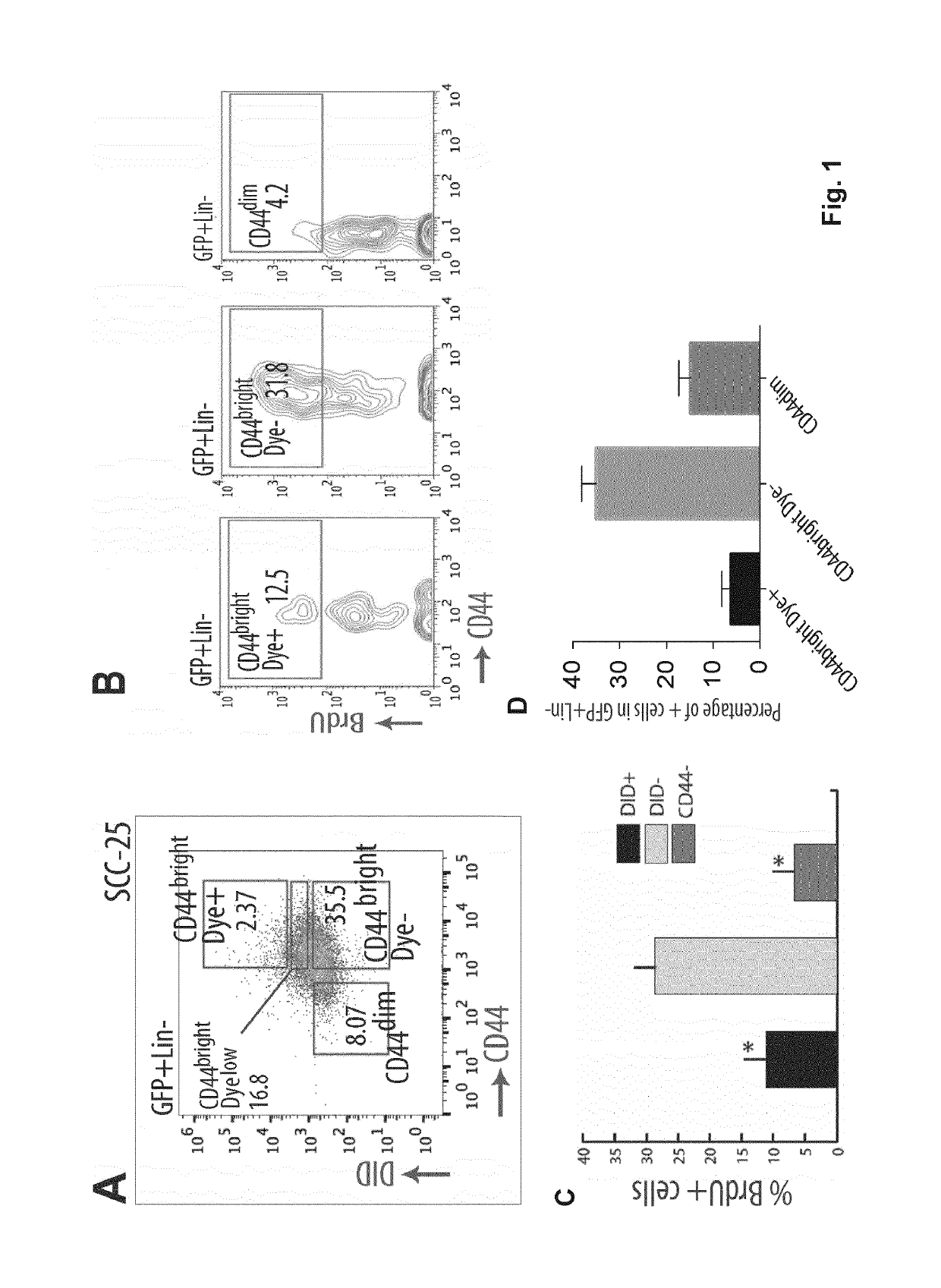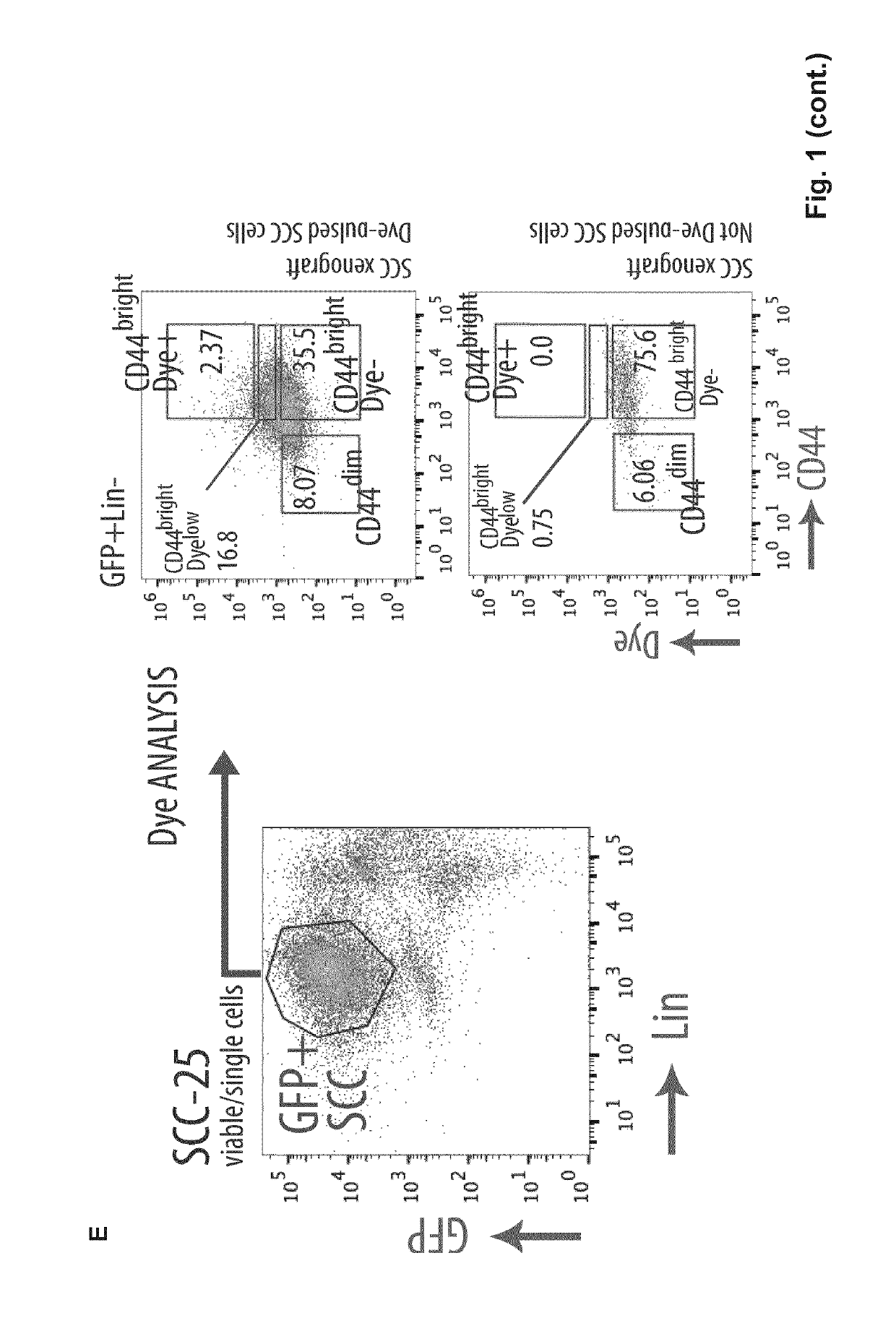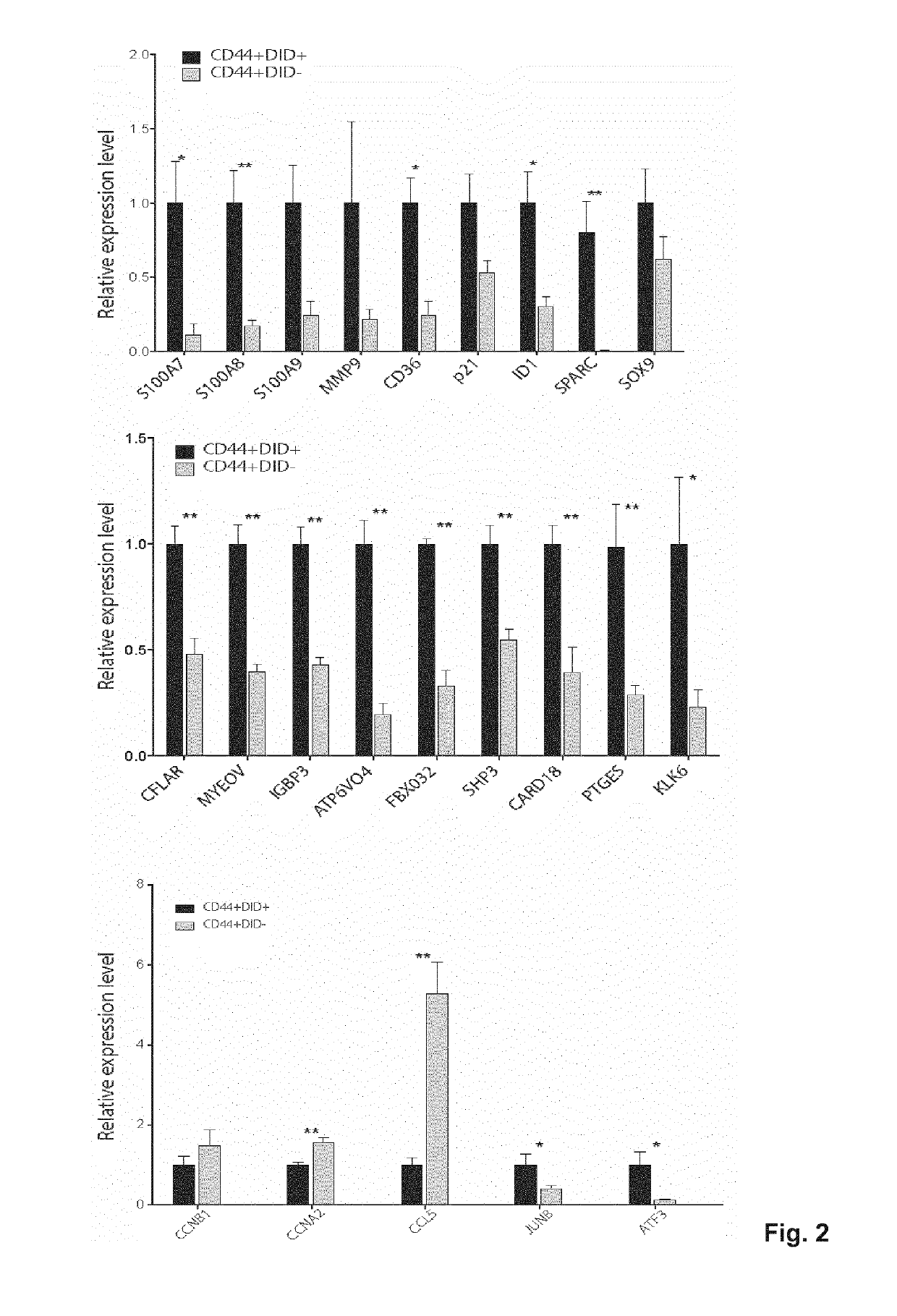Targeting metastasis stem cells through a fatty acid receptor (CD36)
a fatty acid receptor and metastasis technology, applied in the direction of instruments, drug compositions, peptides, etc., can solve the problems of affecting the severely impairing the metastatic initiation and spread of primary oscc patient samples and established cell lines, and achieve the effect of reducing the growth of metastases
- Summary
- Abstract
- Description
- Claims
- Application Information
AI Technical Summary
Benefits of technology
Problems solved by technology
Method used
Image
Examples
example 1
cation of a Low Proliferative Subpopulation in OSCCs
[0117]An orthotopic model of human OSCC was used to study the cell cycle heterogeneity of tumour cells in vivo (Myers et al., 2002).
[0118]To determine whether OSCCs harbour a low proliferative subpopulation of cancer cells in vivo, the inventors first implanted human OSCC cells from established cell lines (SCC-25, FaDu, Detroit-562 and JHU-029) or from primary tumour samples (VDH-00, VDH-01 and VDH-02), transduced with a retroviral vector expressing luciferase and the green fluorescent protein (Luc-GFP), into the tongue of immunosuppressed NOD-SCIDγ mice (NSG). All cell lines and patient-derived cells (PDCs) generated primary tumours with 100% penetrance, albeit with different growth kinetics. Table 3 shows the relevant data.
TABLE 3Generation of primary tumours from implantedcell lines or tumour samples% developed% developedTime untilSCC cellPrimaryMetastasisdevelopSite oflinetumours(LN)metastasismetastasisFaDu100911weekLymph node,...
example 2
ic Potential Associated to CD36 Expression
[0124]It was next tested whether modulating the expression of CD36 would affect the in vivo metastatic potential of OSCC tumours. CD36 overexpression in cell lines and in PDCs with low metastatic potential (SCC-25, VDH-00 and JHU-029) induced a dramatic increase in their metastatic potential to the LNs, from less than 20% to 75-80% penetrance. In addition, the LN metastases generated by OSCC tumours overexpressing CD36 were much larger (>40 fold) than in the parental cells (FIG. 3 C, D, G, H, J, K, M, N).
[0125]Primary tumour growth was also enhanced upon CD36 overexpression but to a much lesser extent than that observed over metastatic growth (dim cells in vivo in all tumours studied, suggesting that CD36 expression is required to maintain an undifferentiated state (FIG. 5B, 6D, 7D).
[0126]The histological analysis of the few LN metastases that grew from CD36-depleted cells presented an intriguing pattern of large swollen cells (FIG. 5F). The...
example 3
ic Potential of CD36+ Cells
[0132]These results supported a role for CD36 positive cells in promoting OSCC metastasis by sensing, internalising and metabolising lipids from their surroundings in a CD36-dependent manner. Since such conclusions relied so far on modulating CD36 expression or activity, the present inventors next asked whether CD36+ cells constituted the population with the highest metastatic potential within the primary oral lesions.
[0133]First, they observed that in all OSCC cell lines and PDC tested, CD36+ / CD44bright cells were always enriched at the metastatic sites compared to the primary oral lesions (FIG. 15). It was also observed that, when CD36+ and CD36− cells isolated from primary orthotopic oral lesions were inoculated separately into the oral cavity of secondary recipients, CD36+ cells were quicker than their CD36− counterparts to generate LN metastases, that were also much larger (FIG. 10A, B). Interestingly, although mice were inoculated with a pure populat...
PUM
| Property | Measurement | Unit |
|---|---|---|
| temperature | aaaaa | aaaaa |
| temperature | aaaaa | aaaaa |
| pH | aaaaa | aaaaa |
Abstract
Description
Claims
Application Information
 Login to View More
Login to View More - R&D
- Intellectual Property
- Life Sciences
- Materials
- Tech Scout
- Unparalleled Data Quality
- Higher Quality Content
- 60% Fewer Hallucinations
Browse by: Latest US Patents, China's latest patents, Technical Efficacy Thesaurus, Application Domain, Technology Topic, Popular Technical Reports.
© 2025 PatSnap. All rights reserved.Legal|Privacy policy|Modern Slavery Act Transparency Statement|Sitemap|About US| Contact US: help@patsnap.com



